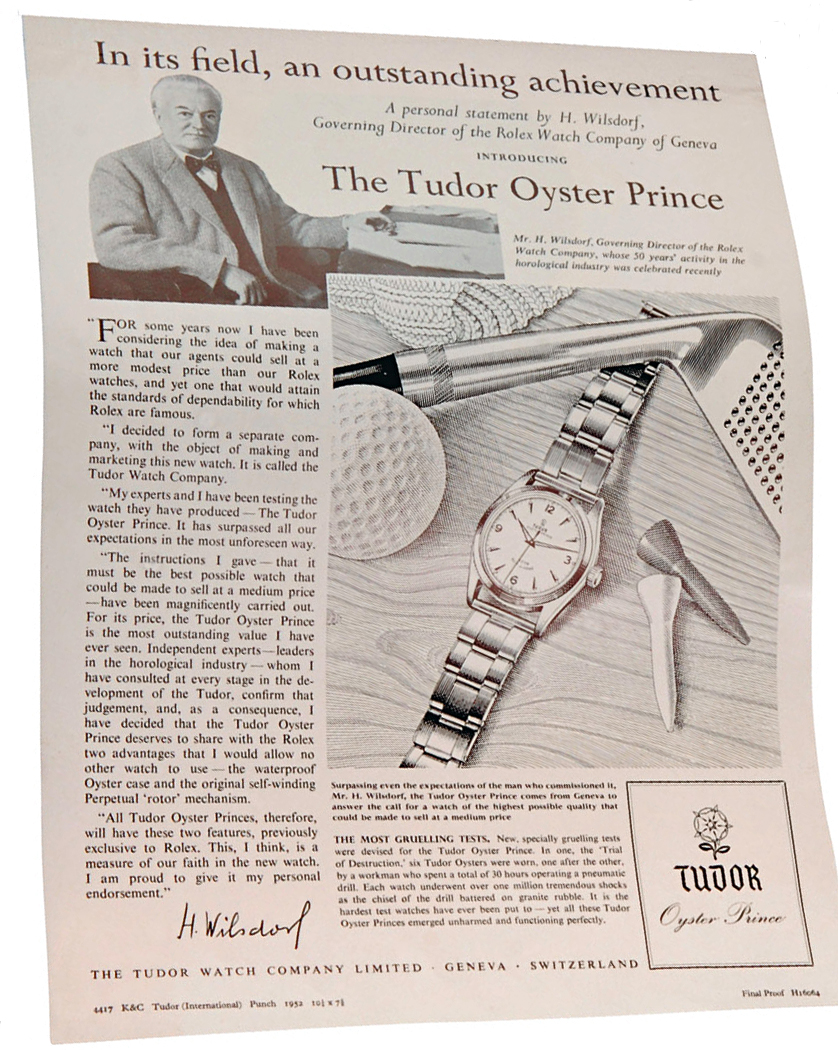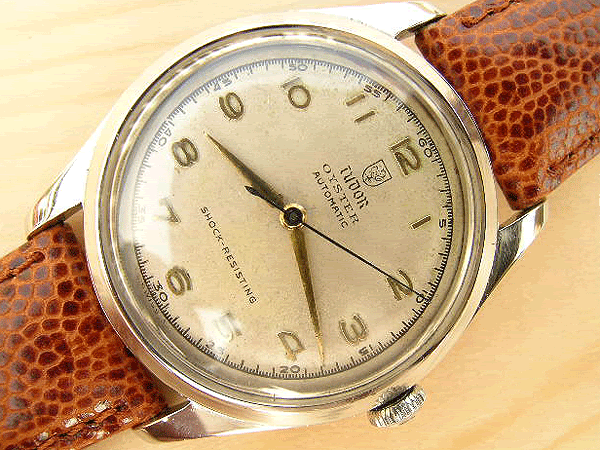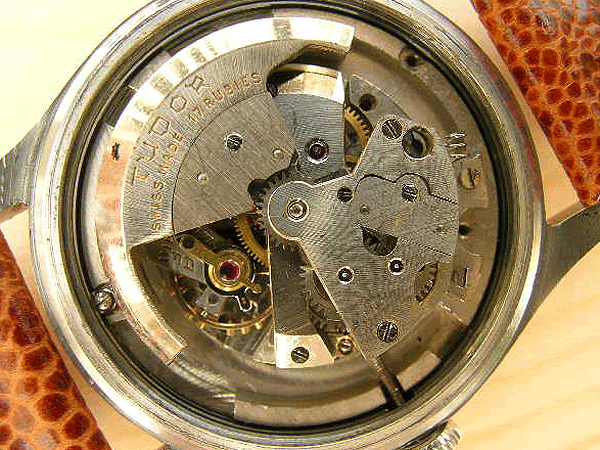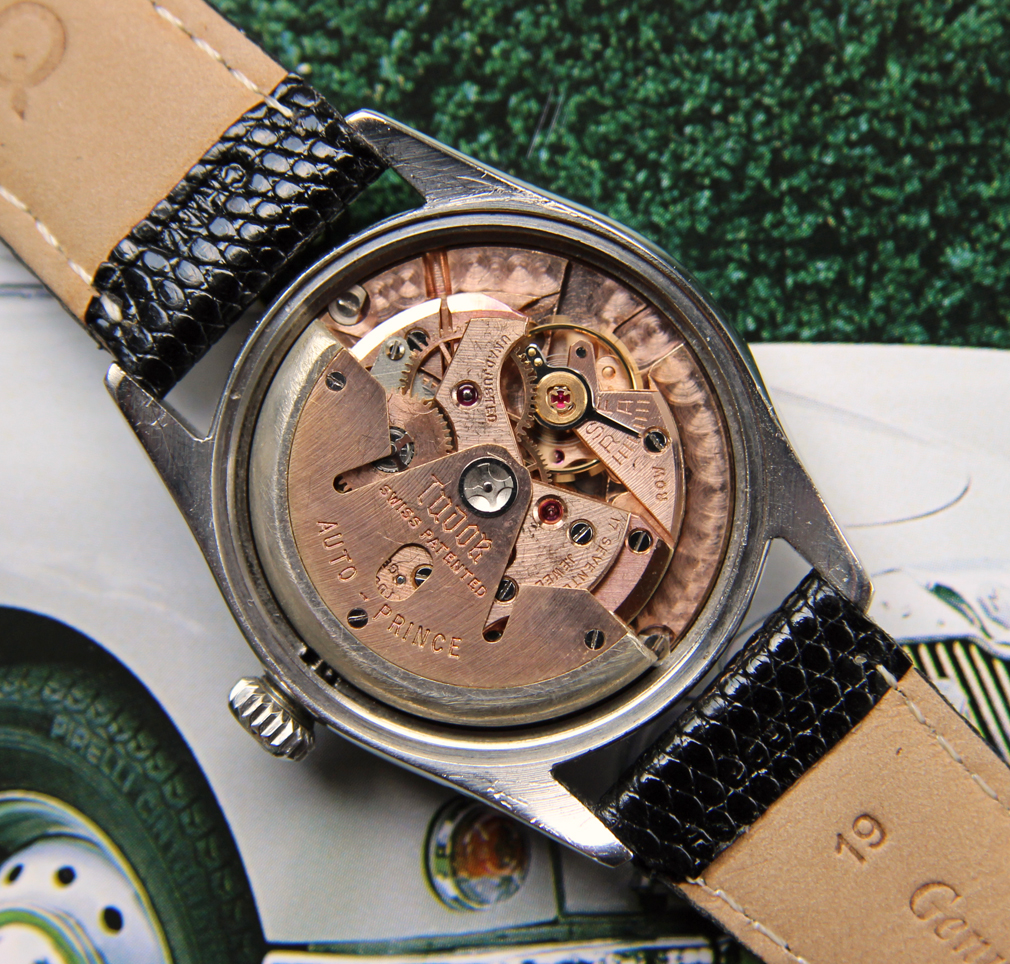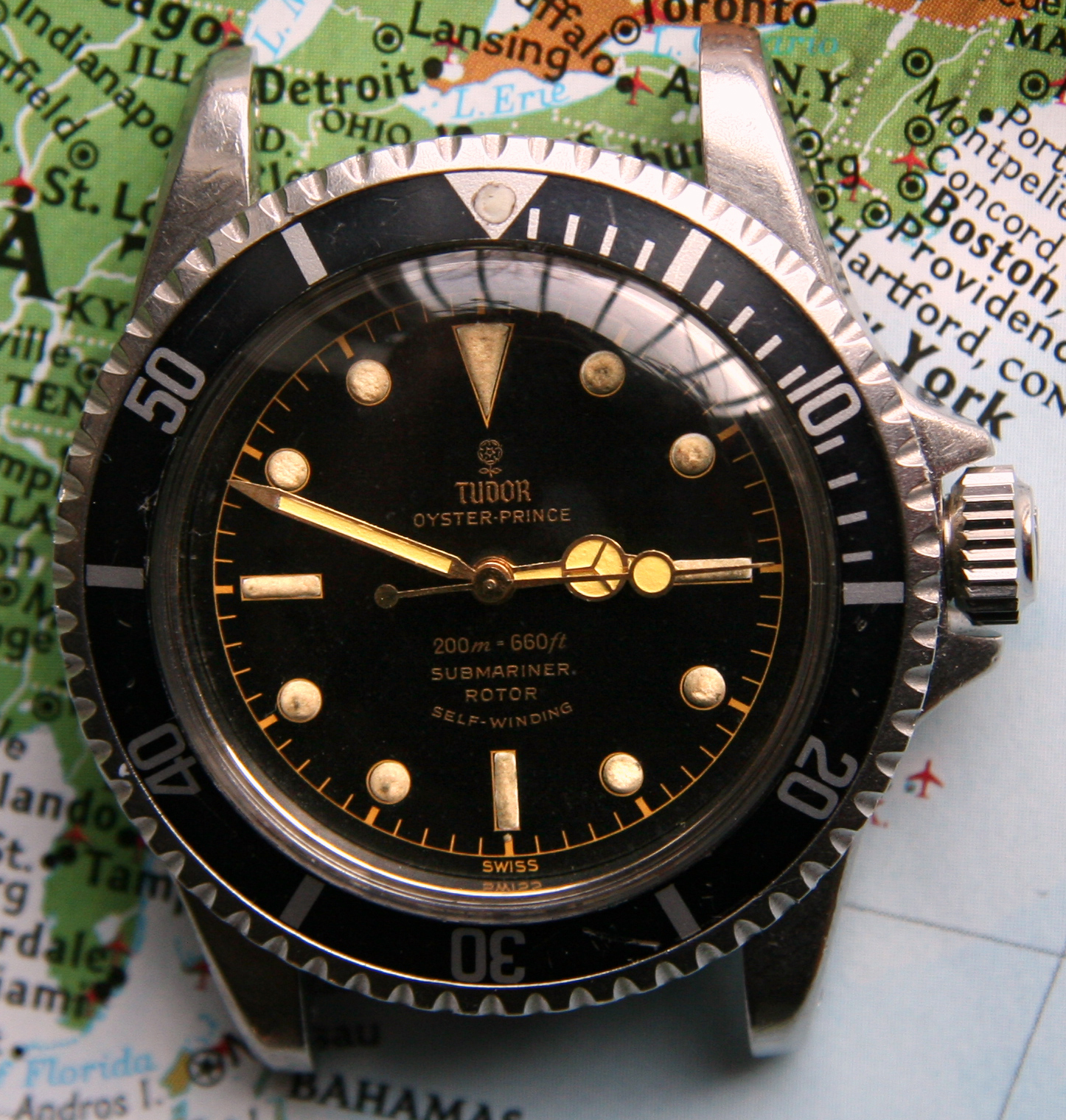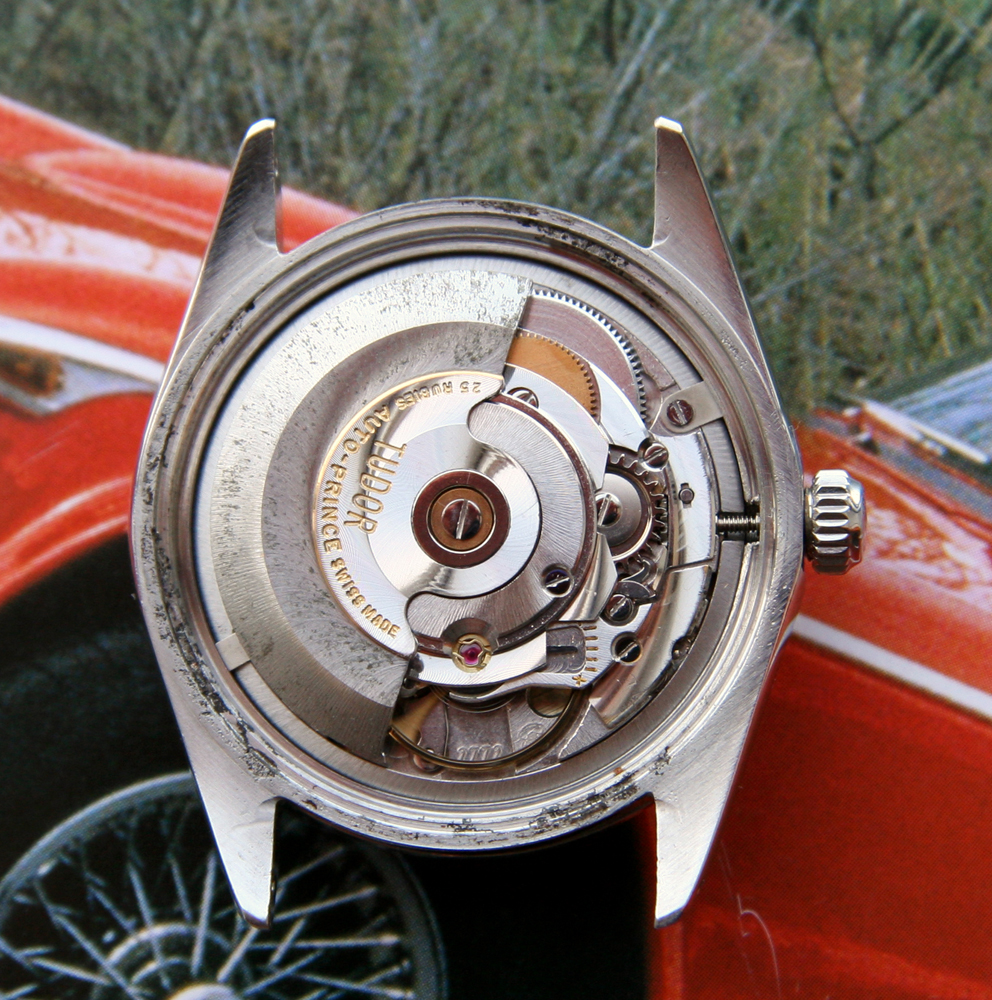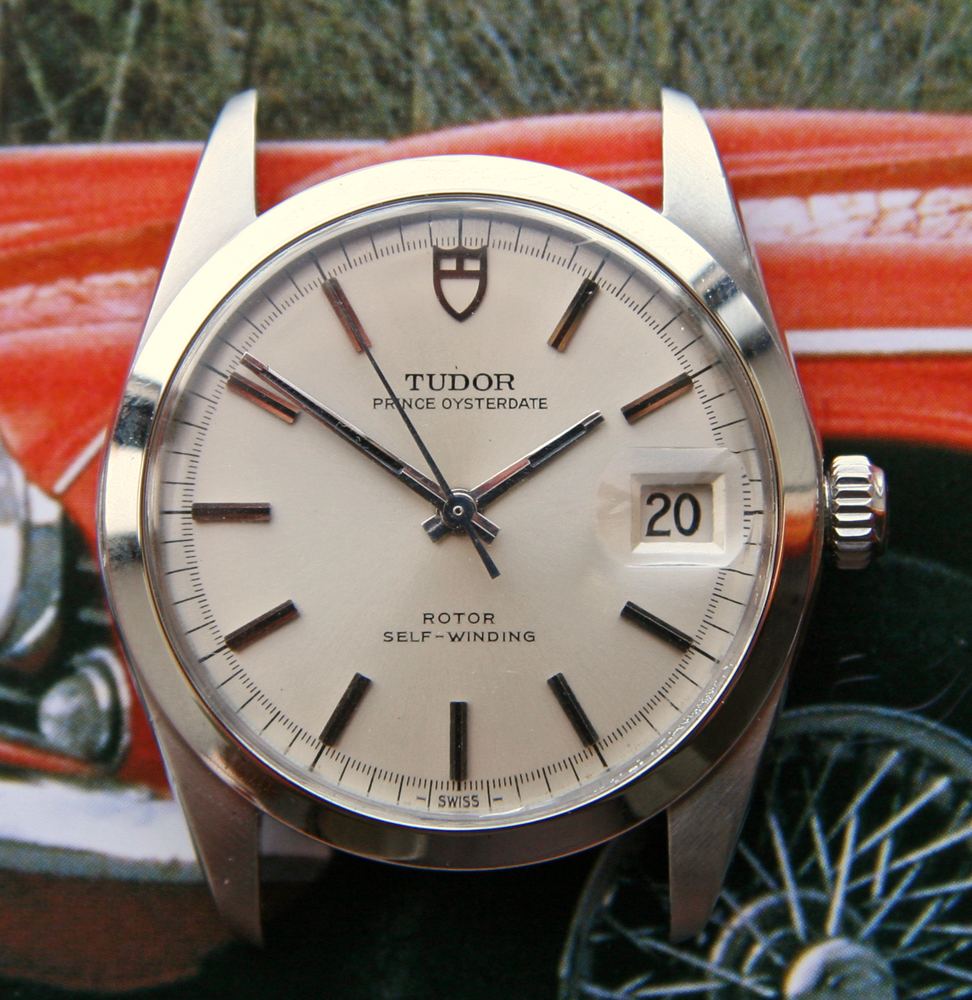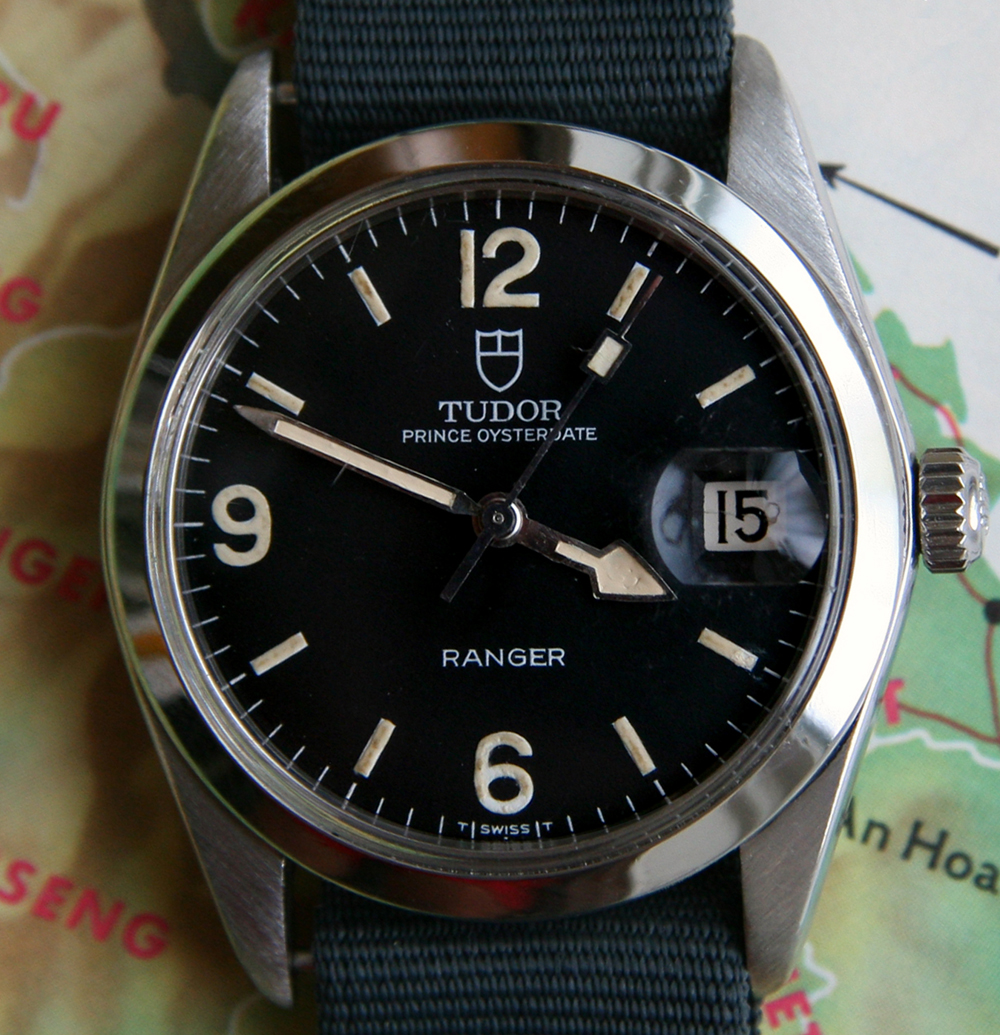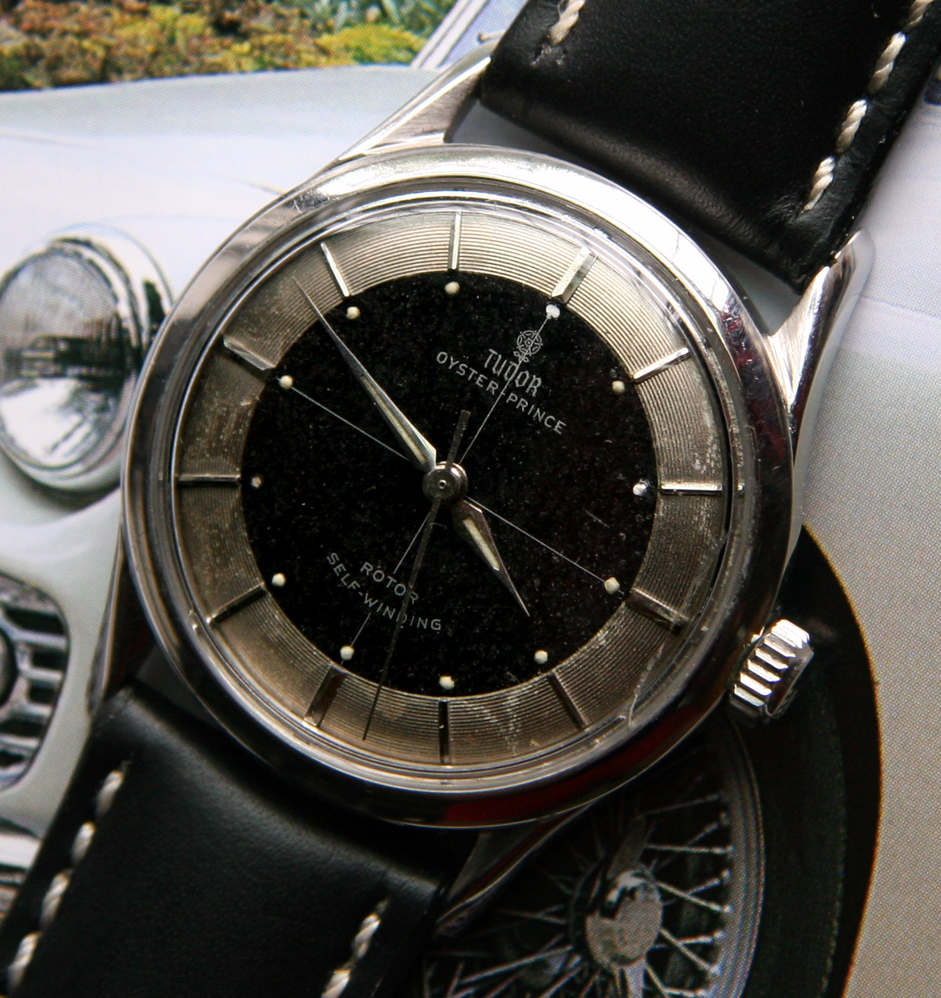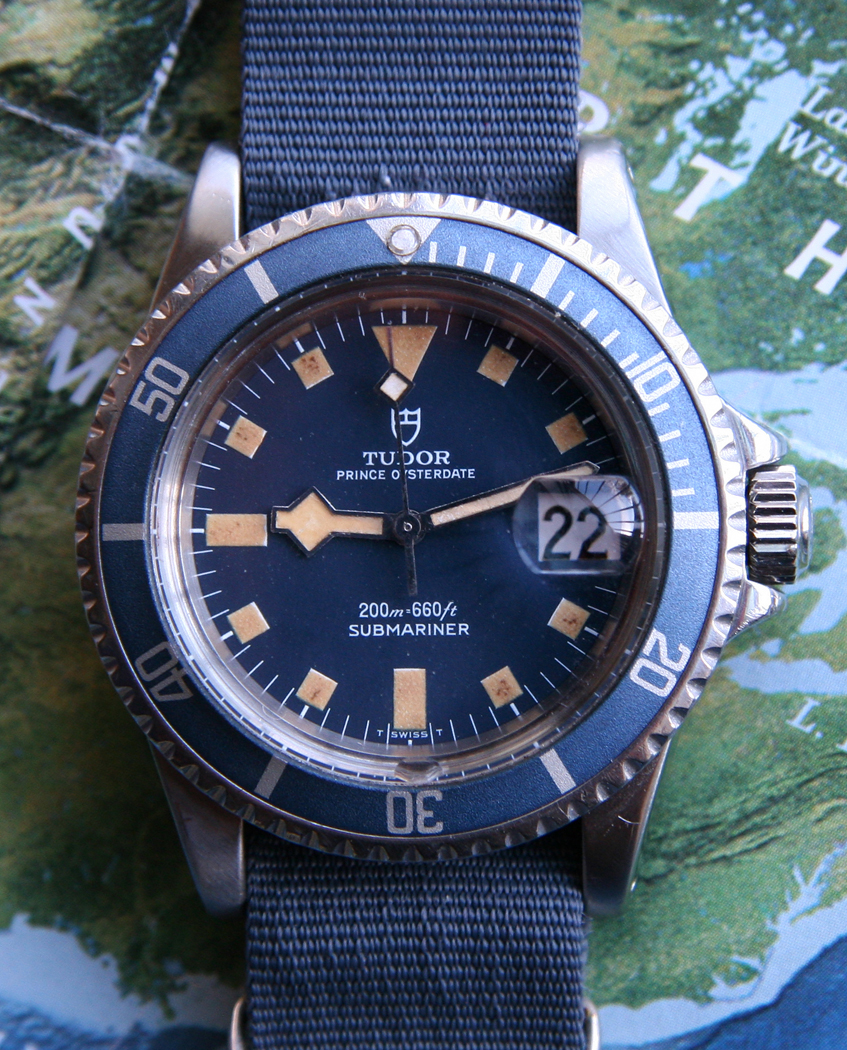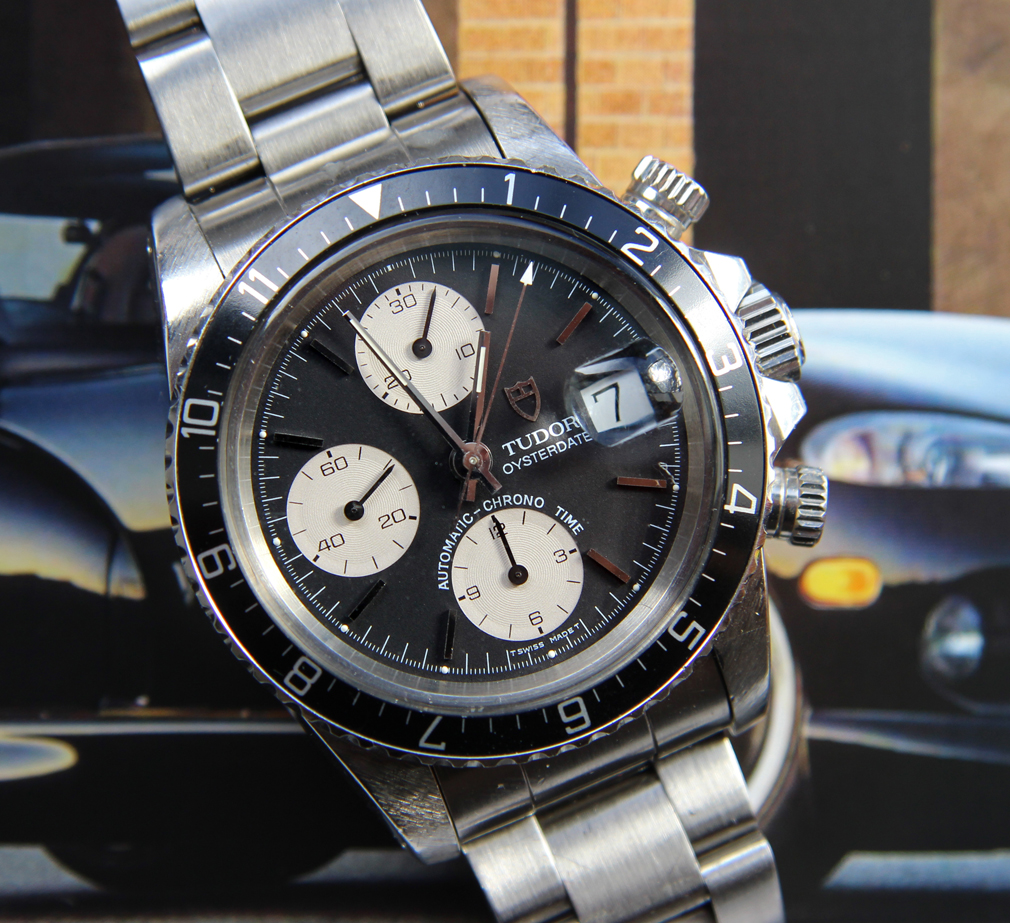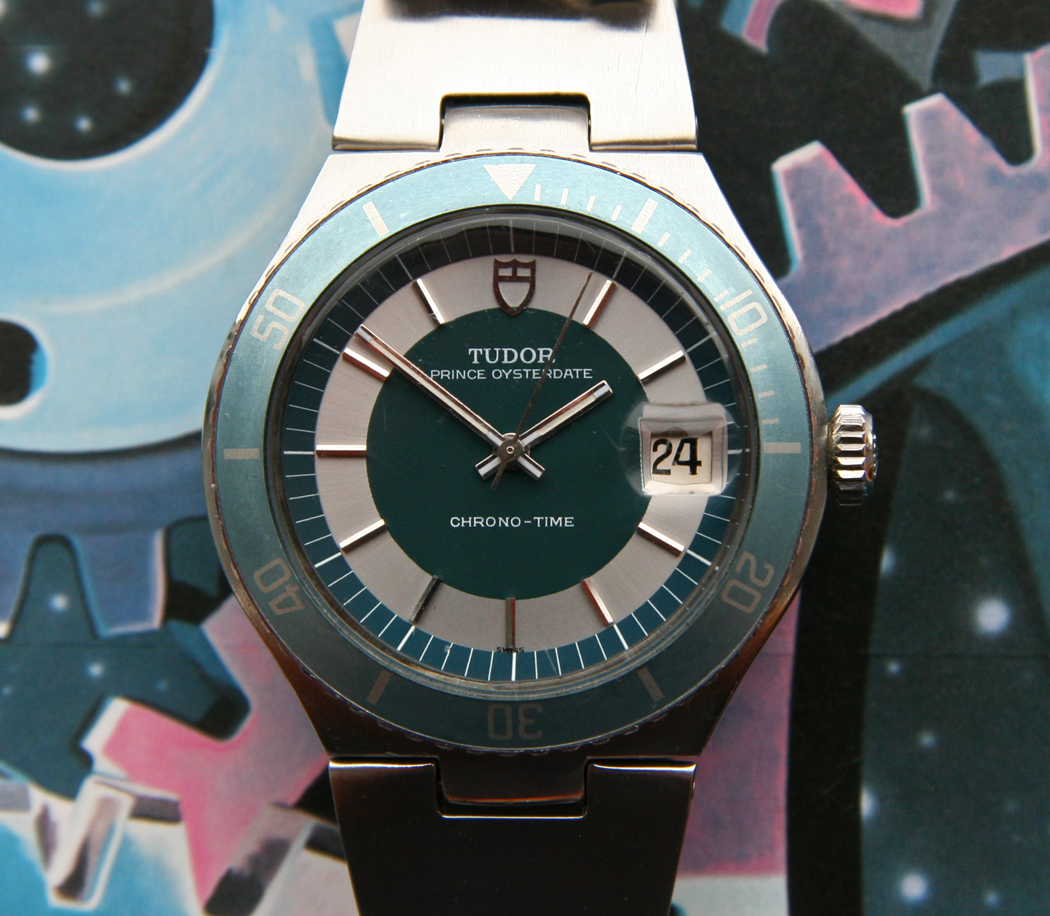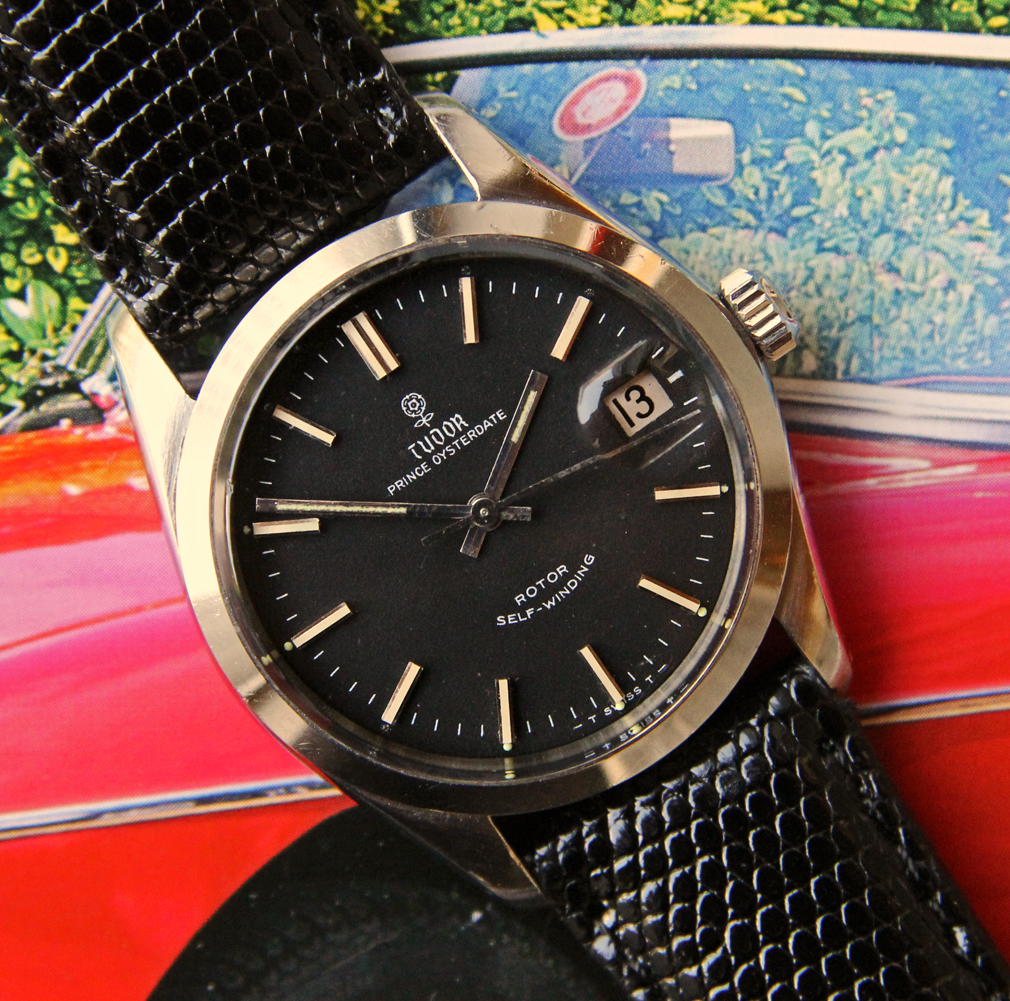In any discussion, Tudor by Rolex must be mentioned as one of the highest quality, most diverse and most appealing brands in the vintage watch world, and one that often offers terrific bang for the buck. Tudor was officially created as Rolex’s junior brand in the post-WWII era as a way to fulfill founder Hans Wilsdorf’s desire to offer Rolex quality at a slightly lower price. They achieved this by outsourcing the movement production.
The first “official” Tudors were actually bumper automatics with A. Schild movements. But these did not really fit Wilsdorf’s dictum that the new subsidiary brand should share the full-rotor automatic “Perpetual” movement that Rolex pioneered and, I believe, still had many proprietary rights to even as late as the 1950s. Therefore, Rolex commissioned outside movement manufacturer Fleurier (FEF) to build a bespoke version of their manual caliber 350 with an auto-rotor module added, thus creating the first exclusive Tudor calibers: 390 (non-date) and 395 (date). You will not find a 390 or 395 in any watch other than a Tudor, as FEF only sold this ebauche to Rolex under exclusive agreement. The debut of these movements marks the real launch of the Tudor “Rotor Self-Winding” Oyster-Princes. Initially patterned after pre-Explorer Oysters, they were also sent on expeditions as their progenitors had been so successfully, to build up their reputation as tough and durable watches for the man of action.
But perhaps most famously, the FEF 390s are found in the early Tudor Submariners of the 1950s & 60s, which are near-clones of their Rolex counterparts and share the exact same robust cases & crowns. The dials of the two brands are subtly different but really very similar at a cursory glance.
While the FEF 390 continued to power Tudor Subs well into the 1960s, costs must have dictated that most “dress” models of Tudor began to be fitted with high-quality ETA movements instead. This may also have had something to do with the expiration of some or all of Rolex’s patents on full-rotor automatic technology because in the late 50s most other manufacturers finally begin to employ that longstanding Rolex invention in their own watches (previously, nearly all other automatics were of the “bumper” variety, with the notable exception of IWC). If not quite possessing the mystique of the cal. 390s, the mass-produced ETA movements were every bit their equal in performance and accuracy and probably had a superior autowind mechanism in terms durability. They were also upgraded frequently as the 1960s wore on, with subtle improvements designated by ever-changing caliber numbers. It’s no coincidence that so many companies chose and still choose ETA movements to power their watches across all price points. So Rolex made a wise move in making the switch to ETA movements for Tudor without compromising quality.
Now in terms of collectibility, most “dress” Tudors, i.e. those that are not Submariners or chronographs, hover just around or below the $1000 mark (condition being king, of course), really excellent value for money. What “hurts” them somewhat is their generally smallish size in today’s big watch era. However, this seems to me a trend that is bound to reverse any day now if it hasn’t started to already, and really we are talking about watches that are the same size as the traditional Rolex Air-King and Date models.
These may be called “unisex” today but in fact 34mm is a classic gents’ dress size and these watches with their smooth bezels tend to “wear big”. (Later in the 1960s, Tudor did release “Jumbo” size dress models with 38mm cases that shared the flat sides of the Milgauss and other Sports models. These were available in standard Oysterdate and also “Date-Day” models and these do command a premium over their regular “Tudor-sized” brethren). And with their “Oyster Case by Rolex” build quality, Tudor watches of all sizes can take pretty much anything a fellow can dish out. For example, the often faked and hard-to-find Ranger is an interesting variation on the Explorer design and was often marketed to service men in PXs around the world.
Even among the standard dress models, there are myriad dial combinations that can add great variety to one’s watch drawer for not a whole heck of a lot of money. Tudor was often used by Rolex as an experimental design studio of sorts and so some of the layouts are really quite striking and not to be found on the watches of their more staid parent company.
Later in the 1960s and 70s, this experimental trend seemed to really accelerate, with radical redesigns for the Submariner beginning with the highly sought after “Snowflake” Subs, which corresponded with the changeover from cal. 390 to ETA movements.
The Snowflakes gain extra collector points because small batches of the non-date models were issued for military use to the French Marine Nationale (Navy) much as the (heavily modified) Rolex 5513 Sub gained cult status by being supplied to Britain’s Royal Navy. (Market Note: I will say here that I see a lot of people asking very high prices ($4k+) for Tudor Subs of all sorts but except for the very early versions with all-gilt dials and pointed crown guards (or the coveted no crown guards) and those with genuine military pedigree, I don’t actually see many of these pieces moving at those prices–I think that for most Tudor Subs, $2.5k-3.5k give or take is actually about right, with a bit more for earlier versions like the semi-quickset Roulette date 7021 Snowflake and a bit less for the models produced later in the 70s/early 80s without such distinctive hands & markers.)
Tudor also followed Rolex by introducing exotic chronographs seemingly inspired by the Paul Newman-dialed Cosmographs.
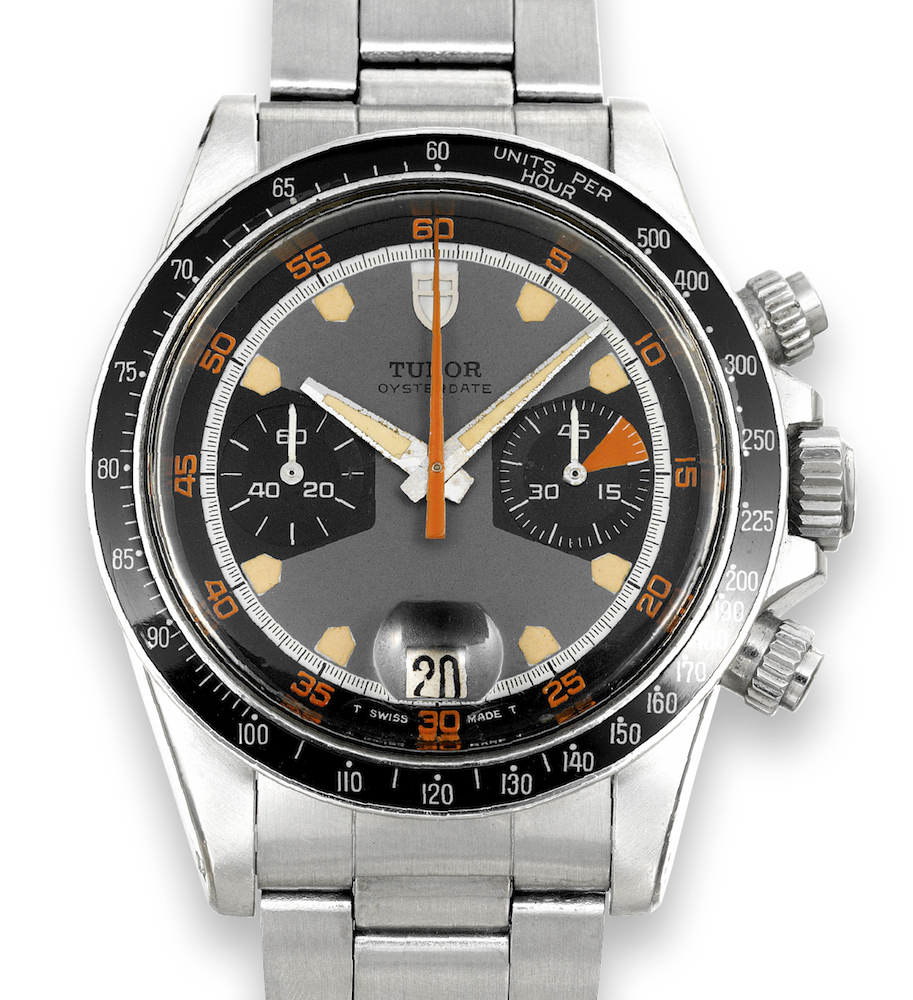
Ref. 7031 “Home Plate” chronograph (photo from Antiquorum)
These early 2-register hand wound Tudor chronos, nicknamed “Monte Carlos” and featuring Valjoux 7734 and 234 movements (see this outstanding article from Timezone en Francais for more), are highly desirable, with the “Home Plate” versions fetching around $20k and the other variations in the $10-$12k range. Soon, Tudor took advantage of the new automatic chronograph movements coming online at the beginning of the 1970s and created the 3-register Valjoux 7750-powered “Big Blocks” with both exotic dials and conventional silver and black dialed versions. These latter standard plexi-crystalled “Automatic Chrono-Time” chronos are still very good value in the mid $3k range and are macho in the extreme,with super beefy cases measuring a large 43mm to the crown guards.
Tudor also utilized the Chrono-Time moniker for an even bolder embrace of 70s design than Rolex’s Oysterquartz line.
The various distinctive tonneau shape/integrated bracelet models were likely positioned to challenge Omega’s dominance in the chunky, funky 70s category in ways that the parent company was unwilling to pursue (wisely, in retrospect). Found most frequently in blue but also in red and rare green, these scarce cult favorites with rotating bezel fetch in the mid-to-low $1000s. For those without the rotating bezel, the rare Ranger II layout is the top dog and can sell in the $2k range give or take.
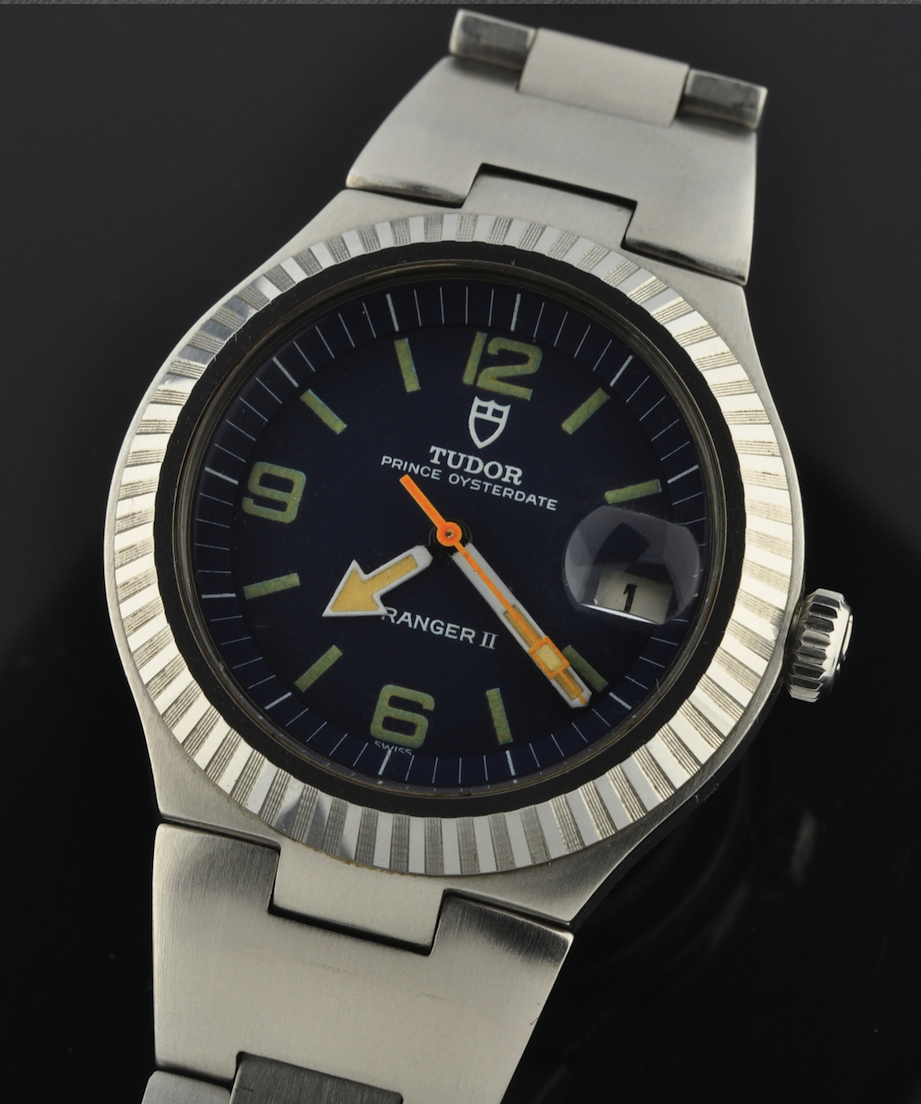
Ref. 9111/0 Ranger II (pic from WatchesToBuy.com)
Standard dial versions with this case earn considerably less than that, despite sellers consistently trying to hype them. In the end they are an acquired taste although, for many, a fun change of pace.
Today, Tudor has a newly expanded upmarket profile with fine, bold designs like the Black Bay, Pelagos and a new range of cool chronos, including “Heritage” reissues of the original Monte Carlo variations. There’s even a new, sophisticated version of their classic alarm watch, the Advisor. And after several years of not being marketed in the USA, Tudor has re-entered the American market at select Rolex Authorized Dealers, including Tourneau, Wempe & William Barthman Jewelers. They will also be the chief sponsor for 2014’s debut of IMSA’s United Sports Car Series, a sure sign that once again, Rolex will be deploying Tudor worldwide as a subsidiary luxury brand well worth talking about and owning.
A great place to learn about vintage Tudors is over at the excellent Tudorcollector.com blog and also at the Vintage Rolex Forum, where you will find answers to your questions and also that the junior brand takes up nearly as many topics as King Rolex.

